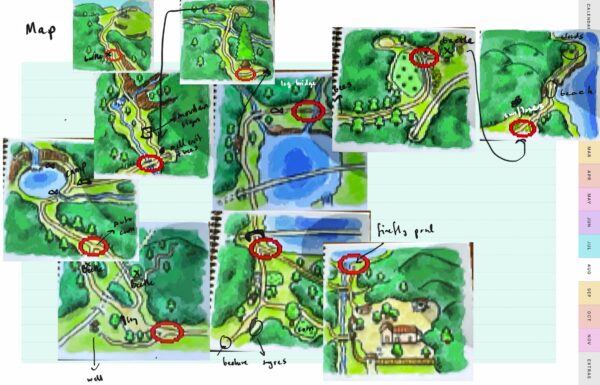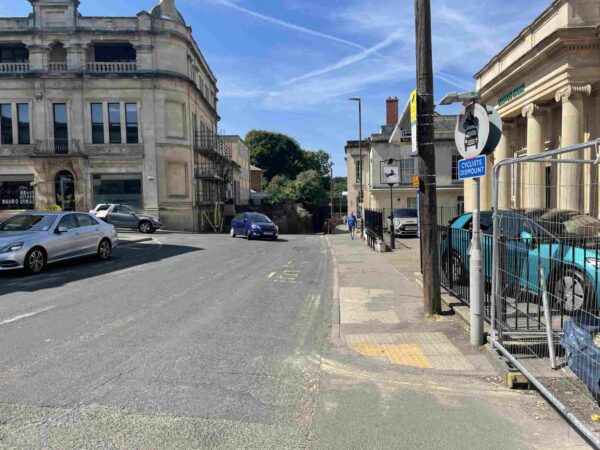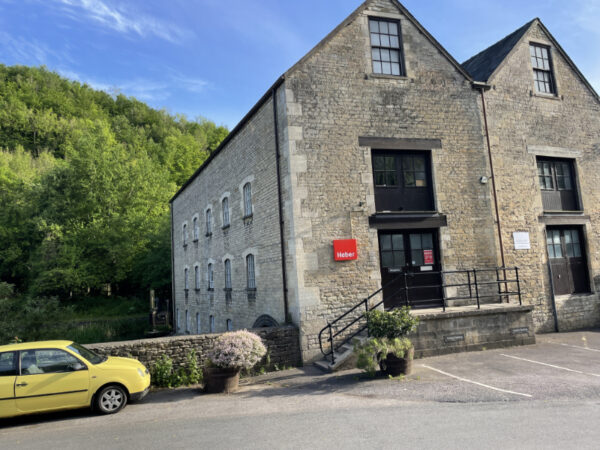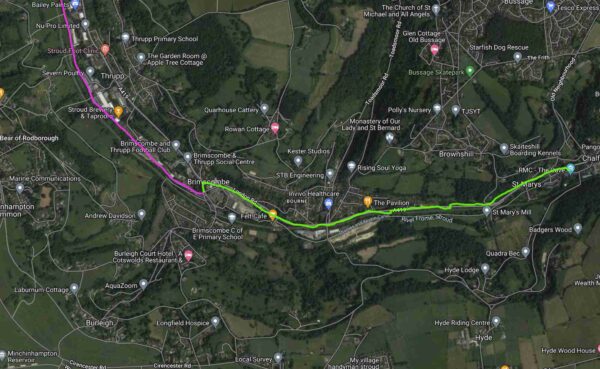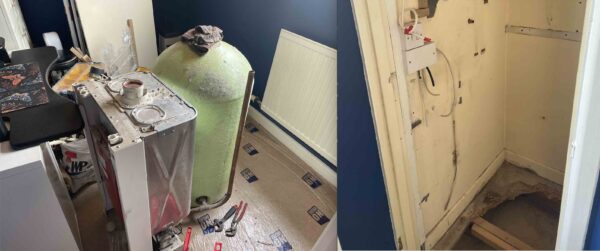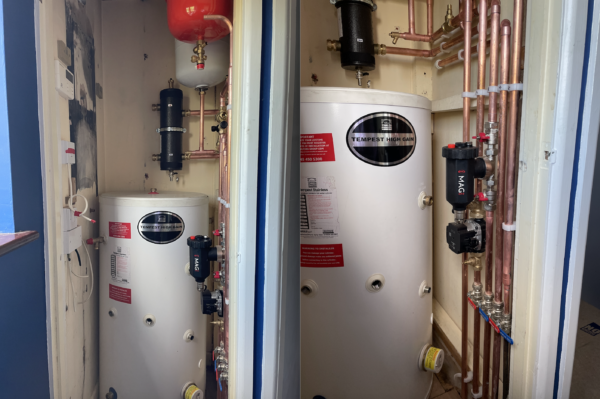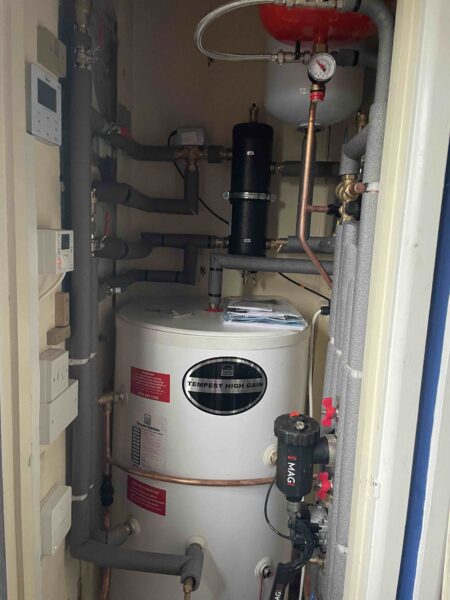So many people have reached out to ask how we’ve gotten on with our heat pump through the winter.
We even got a week of snow which I wasn’t expecting to see for at least another year so that was a happy surprise.
Whenever I talk about my heat pump people always say “ah, but they don’t work once it gets below zero degrees right?”.
I’d like to debunk that “it doesn’t work when it’s cold” thought with my experience of our first really cold winter.
Getting used to weather compensation
Our heat pump is configured to work with the footprint and heat loss of our home. So everyone’s home with a heat pump is uniquely different and that’s what makes gauging how well they’ll work in your home that much harder.
A proper installation process includes a heat loss survey, an assessment of what heat pump and radiator upgrades you’ll need and an approximate idea of how much it’ll cost to run.
Have to say our install and cost estimate was pretty much spot on.
However the biggest change for us was getting used to the idea of weather compensation – where the flow temperature of the heat pump relates directly to the temperature it actually is outside. The warmer it is outside, the less the unit has to work to get your home up to temperature.
In order to keep the system as efficient as possible, we also had to get used to having the heating on 24/7. Having the heating on at a lower temperature at night in particular took some getting used to. It’s not something I did before. We currently have our house aiming for 20 degrees in the day and 16 degrees at night.
As someone who is more mindful of the environment with each passing year, being more mindful of the weather around me is a good thing. I found myself being more mindful of daily temperatures and forecasts as it got colder. It actually helped me settle into winter a bit better (it’s my least favourite time of year).
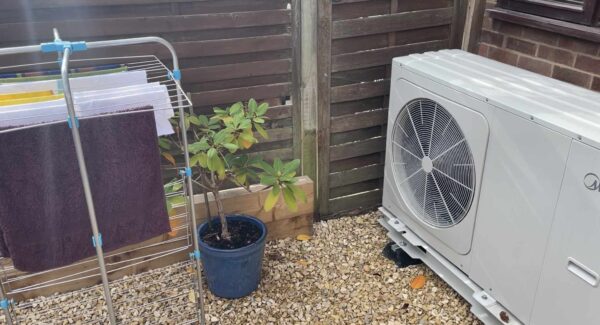
Isn’t it cold inside?
I am usually cold and I was worried about whether or not the heat pump would heat me and my home sufficiently. I didn’t need to worry. I am always toasty. In fact with weather compensation I think the heat pump is doing better at heating my home than my previous gas system. Possibly because of the improved efficiency, but also due to the care that went into sizing this system.
Lastly, it’s been great not to use gas, especially with the knock-on effect on the war in Ukraine. It’s also been a great relief of climate anxiety to not watch the daily fumes escape our house from the vent. Gas remains in our house (for hob cooking) but I will be very glad to shut this off very soon.
We are settled into heat pump usage and I am very happy with my investment.
Turning the heating on 💸
We switched on in mid-October. A little earlier than we needed to but we were keen to check everything was working OK and as I get up at 6 am each morning (chronic pain is a great alarm clock). I was starting to notice it was getting very cold, and my pain was getting worse.
Getting used to the ambient heating is strange, I put on checked all the radiators and our house is cosy at a 20 degrees average temperature. Only thing that really felt different is the cooler radiators.
Again, I can completely dispel the idea that life with with heat pumps is cold. I’ve been plenty toasty and it’s actually made me a bit hot on a couple of occasions. Really impressive heat.
As a result our house averages 20 degrees on all three floors. The ground floor is normally 18 degrees and our bedroom is 19, the middle floor (where the thermostat is) is usually about 20 degrees or higher. We just leave the heat pump to it and it just works.
Our cats like it too.

Costs are so subjective, because it depends on your home and your tariff and your circumstances but I can say that he harder the system has to work the more energy used, but so far it averages between 3-8kWh a day to keep us warm in October. Between 10-20kWh in November.
In really cold weather (like the snow we had) we were using about 30-35 kWh per day.
Your mileage will vary though obviously, more information about our home is in this post.
Our house uses more energy heat up until about lunchtime and then it settles and the cost slows into the evening as it maintains heat.
What’s is really like when it’s snowing though?
I’d describe at as toasty – but slightly more expensive. Our heat pump has a estimated COP of 3.67 (above zero degrees), I think that drops to nearer 2.0 when it’s really cold. The whole system has to work harder. Prior to the snow it was working out at about the same as our gas system (not including price rises) with cold weather and snow it was slightly dearer.
Plus the system itself was working a lot harder. The unit outside was marginally more noisy. I doubt anyone will have noticed, (it’s pretty quiet) but the contents of our cupboard where the pipes, inverter and other equipment was was noticeably louder. A gentle hum permeates the floor that the cupboard is on.
It’s rather like having a boiler in your house to be perfectly honest. I work next to the cupboard all day. The radiators really got hot when it was snowing though that felt a bit more like gas central heating system.
As for the snow on the unit itself outside. Well it was a complete surprise when I awoke to snow as it felt no different in the house. The heat pump worked happily outside. I took a picture of it covered in snow, and cleared the top and sides of it a little, but it’s legs and it’s defrosting worked perfectly. Our lowest temperature outside was -6.

Insulation is of course important but becomes even more important at colder temperatures. I really started to notice the impact of heat loss in the snow and it’s something I’ll have to improve. However with our roof and cavity walls done all that is really left is the exterior walls of the original victorian house which will require expensive external insulation. We do also have two windows to replace and that’s about all that’s left that we can really improve.
Overall on price (not including the overall increases to prices) it’s about ~10% more expensive to run – but only on really cold days (sub zero degrees). Every other time it works out about the same (maybe a pinch more) but I have some more ideas on this topic. If you have a well-insulated home you could definitely save more money, it’s such a impressive piece of kit.
Future things to look at
- Homely by evergreen energy – this device which is installed next to your heat pump internal control helps manage the weather compensation, learns about your houses heat lost and reduces the need to have the heat pump on 24/7. When paired with a smart tariff we could potentially save quite a bit.
- Smart tariff – We’re working on getting enough usage data (minus gas) to switch to Octopus Energy.
- Heat pump tariff – Also exploring this offering from Octopus Energy.
- Insulation – there’s some cheap and easy insulation we can still do, plus I’ll get a survey on some external insulation.
In conclusion then, really happy with our heat pump, works exactly as described it would and our home is always warm and comfortable.



